It is a very sunny, very blustery Saturday afternoon at the end of March and I am sequestered in the sunniest armchair of the house. It is the prime daytime location in my mother’s house and there are regular skirmishes between the dog and cat to enjoy it’s benefits.
The benefits are thus – it is a tall wing-backed chair, always draped in a soft fleecy blanket. It provides full view of the kitchen – and therefore first knowledge of anything tasty – and is French windows adjacent – and therefore prime viewing of birds, predators and intruders. The humans of this household – most of us at least – tend to call the latter ‘visitors’ rather than intruders as anyone who comes to the backdoor knows the lay of the land.
The predators, in the eyes of cat and dog, include the cows which currently reside in the back field and regularly crowd the garden fence eyeing up my mother’s young hedging. There is also, apparently, a wild cat which Rosie takes great Umbridge to. Presumably, because Louis – currently stretched out on the armchair opposite – was also once a wild cat. And there aren’t enough armchairs for that pipeline to be allowed to continue.
As regular readers will know, Louis is in fact a three-legged cat, having lost a front peg to a pellet gun and the vicious boredom of local pre-pubescent boys. Their identities are known, I gather, but they have been kept from me for fear I’d do something extreme, like immortalise them as blaggards in a short story that would never see the light of day, presumably. More stagger than swagger on his three legs, Louis is a somewhat graceless panther. He has a sleek black coat, a handsome, thick head and an insatiable appetite for cuddles. I am thoroughly allergic to him and consume a daily antihistamine when home in order to show him the love and adoration he deserves in every waking hour. He is a black void, and he is currently staring at me with his big, halfmoon, yellow eyes under lowered lids in a way that says “I know you’re writing about me”.
Rosie is a rescue dog. Her only known origins are from the mean streets of Derry City and she displays her ‘Mucker’ heritage in her shoulders, pacing around like she’s carrying a widescreen tv and holding a pencil under her chin. While this makes her sound like a Pitbull, she is in fact closer in size and physique of a Shiba Inu. She is barely bigger than the cat. Her DNA could contain anything from Chihuahua to Huskey but we have come to believe that she is mostly fox. She is, contrary to her Derry City origins, a black and tan, with an enormous bushy tail which she winds around her body when she curls up to sleep.
Adopted on Valentines Day just before the world went into lockdown, she has been an often-nervous dog, and is still standoffish of strangers in a way that, frankly, I respect. She has only in recent years, accepted me as part of the pack, mostly because I spend every visiting moment at home plying her with scraps of meat in an attempt to teach her commands and useless tricks. This is part of my own proud heritage, a practice handed down from my maternal grandfather who taught his springer spaniels to present their dishes for treats while balancing on a footstool.
Having spent some of the past two weeks in her company, I’ve rediscovered a great grá for the way Rosie slow cooks her little barks. You can see how she shapes her mouth and holds the impending ‘brrffff’ there for a moment, letting it warm up before she spits it out. This is, unless she suddenly sees or smells the wild cat, at which moment she emits an unholy barrage of rabble-raising woofs.
Perhaps having discovered that the only thing worse than being written about is not being written about in favour of the dog, Louis has relocated himself onto my lap, or more specifically, onto my mousepad. But both animals have dominated seating arrangements and subject matter here too much already this morning. I came here to write about what I’ve been reading so far this year.
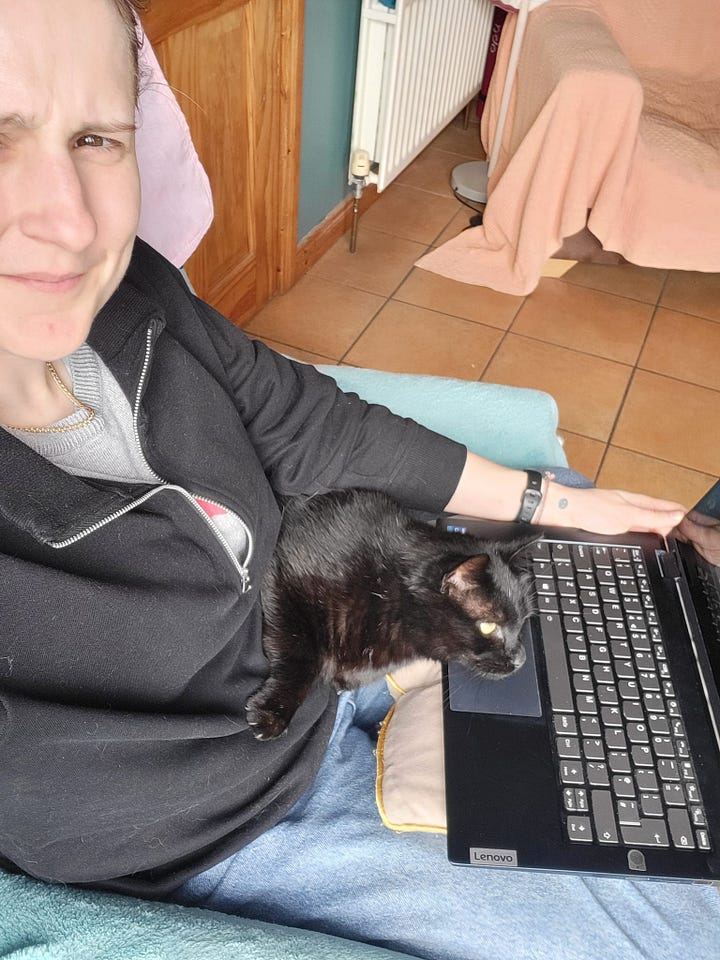
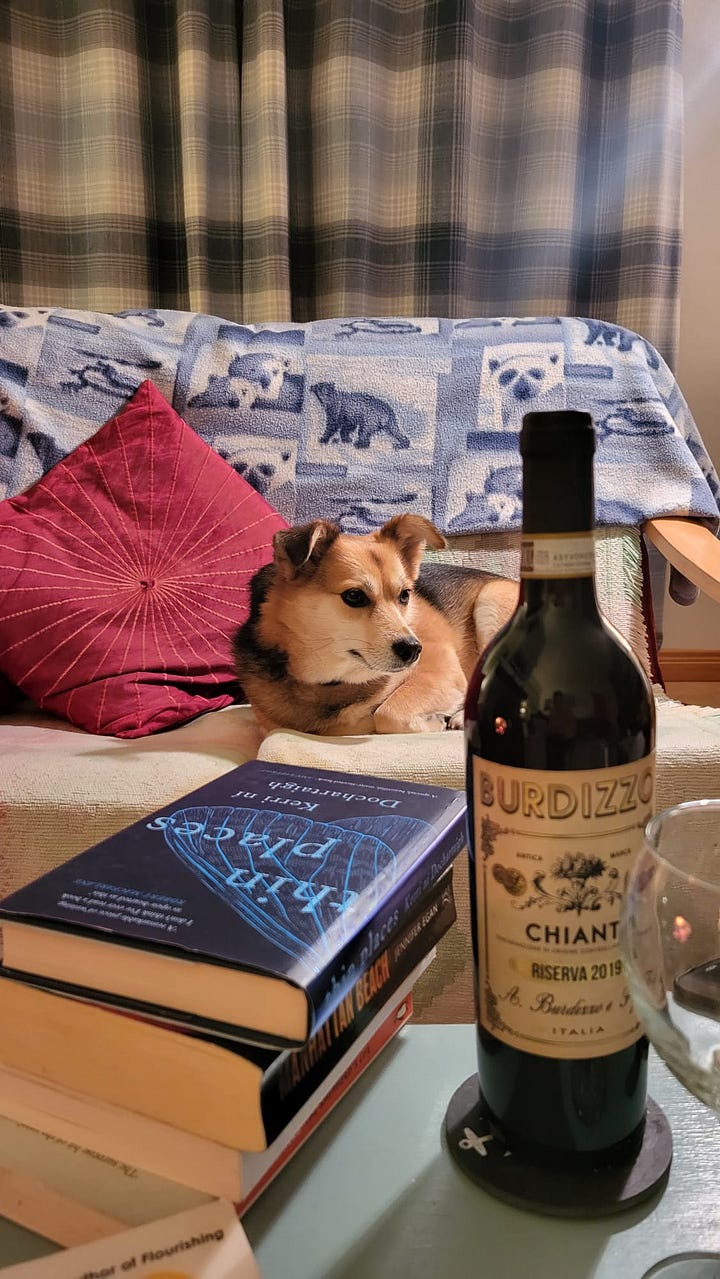
A reading round up
I’d had the good intentions of sharing a reading round up every month or so this year, but like with most of my good intentions, they were circumvented by distracting forces such as the need to sustain a career, pay rent, consume excessive amounts of rugby and exercise some kind of social life. So here are my belated efforts – a round up of reading from the first quarter of the year.
Storygraph helpfully tells me that I have read 15 books, and some 3,879 pages, so far this year, predominantly dark, emotional, reflective literary things. There’s a good balance of fiction (64%) and non (36%) so far this year and the right balance in terms of real books (53%) and audio (47%) which I would like to retain for the year. Christ, but I love some data.
The year began with a masterpiece little collection of shorts called Weave. The writing – tone, atmosphere, character, all of it – was gorgeous, but as a physical thing, this book is stunning. With stories from Oein DeBhairduin and Deirdre Sullivan living top to tail and beginning at either end of the covers, there is a mirror-like quality to the whole thing. The stories recognise each other, the almost Japanese-like illustration adds to the sense of something mystical.
I actually gifted this book to my sister last Christmas and after inhaling it in an evening she gave it straight back to me insisting I read it. It took me a while to pick it up but as soon as I did, I understood her urgency. There is a quiet, simple power in the storytelling, something ‘by-the-fireside’ about them that makes them bigger than stories – they are important testaments to be passed on.
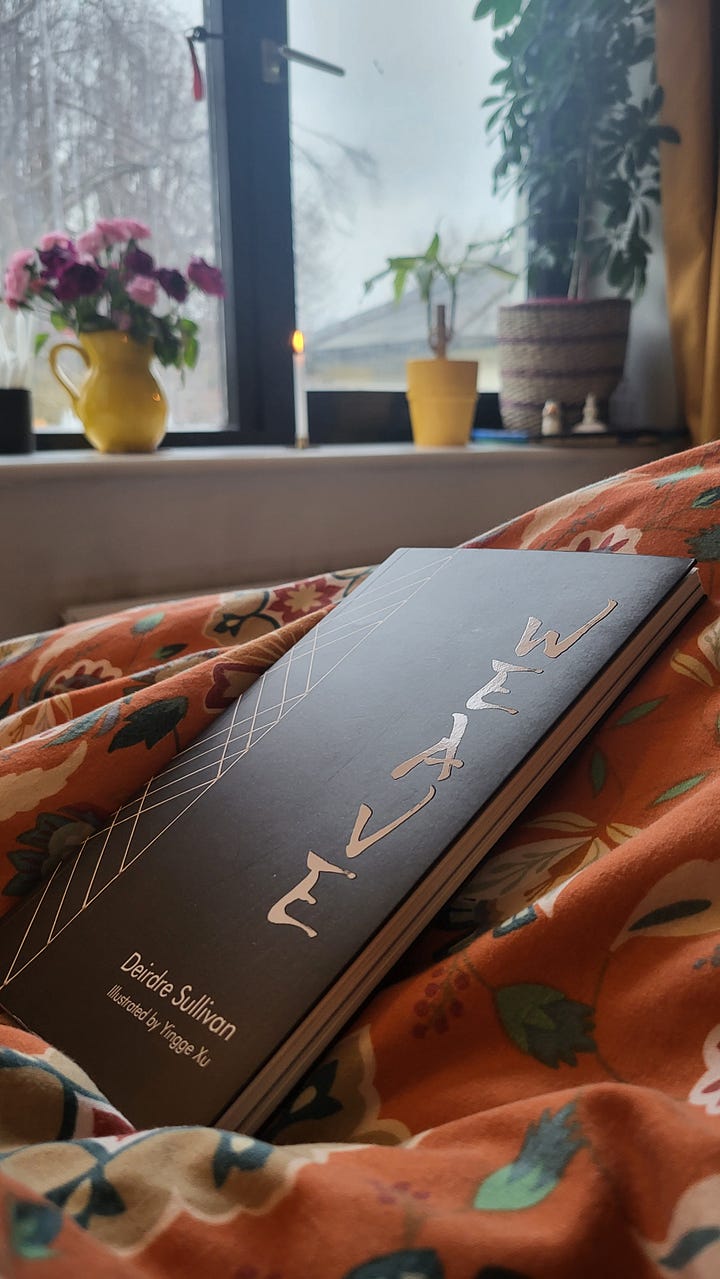
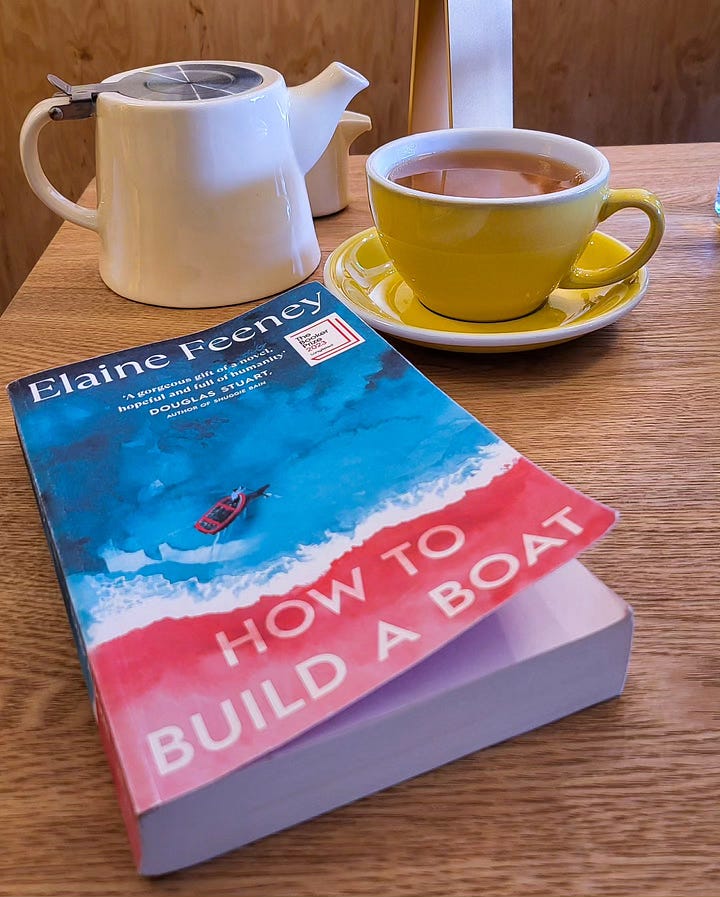
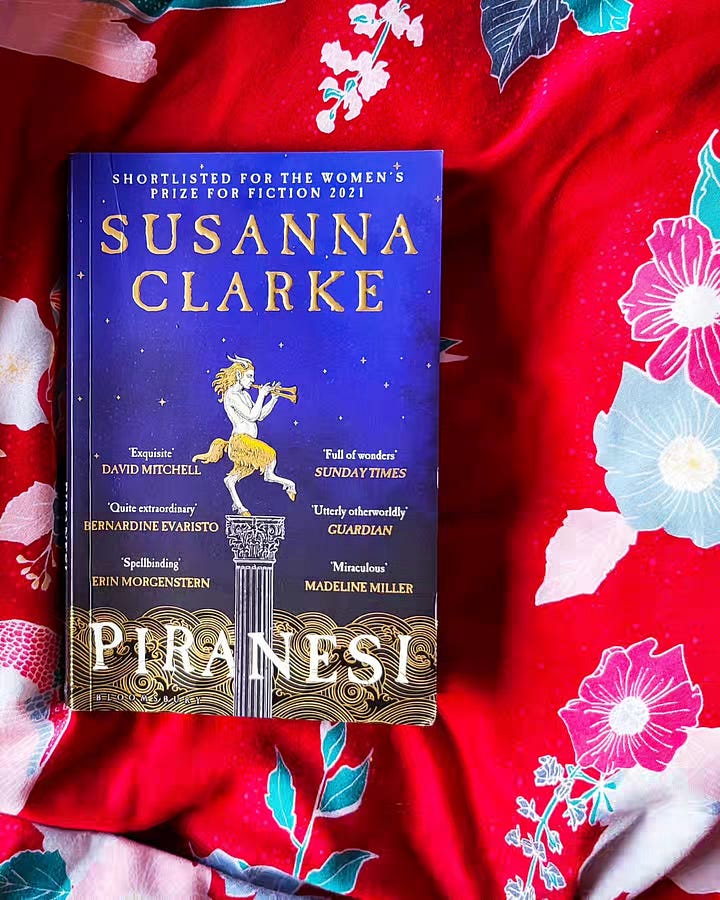
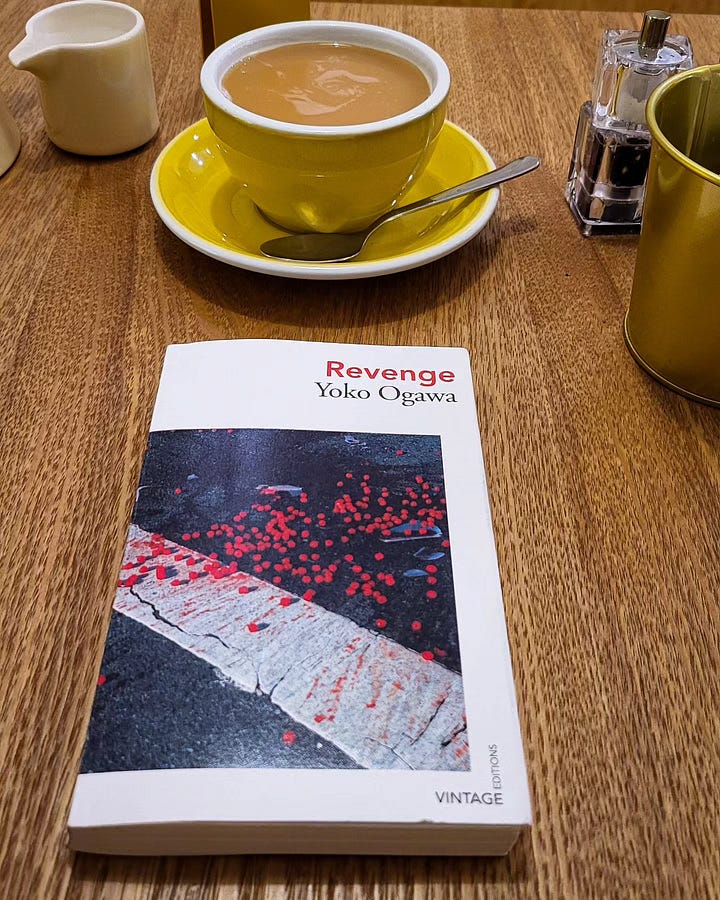
I devoured another meaty little collection of short stories by Yōko Ogawa. Revenge is a spitfire collection of eleven dark tales which run one into the other as a series of recurring nightmares from different angles. This collection was, oddly, a gift from a romantic prospect and it made me like them a good deal more. I might make the giving of books a prerequisite on my dating profile for future prospects.
Elsewhere in fiction, there was How to Build a Boat, for book club, which for the most part I did enjoy, although it felt like there could’ve been so much more done with it.
There was also Piranesi by Susanna Clarke which bamboozled me in a most wonderful way. I had come to it expecting something of the Greek mythical retellings which are so in vogue in recent years, but what it turned out to be was something utterly new and unknown to me. Something utterly all-consuming in the way it rearranged the furniture in my head. I still think about it occasionally, in a perplexed yet admiring kind of ‘what the fuck was that? way.
Most recently, I devoured Sarah Webb’s upcoming title for young readers, The Weather Girls in front of the fire in Donegal, which I’m heartily recommending for all ages who enjoy a little history and big, bold heroines.
In audio reads, I listened to Love in the Time of Cholera, my first Gabriel García Márquez. I’d not come to it with great expectations or preconceptions and my abiding sense of it was that there were too many long, elaborate Colombian names which, to my ignorant and often tired ear, became too alike so that I often found myself skipping back to recenter myself in the action – who were we with now, who are they sleeping with this time?
There was also The Master by Colm Tóibín which I devoured. Tóibín is a divisory force in our family and I appear to be the only one on the side of love while my mother, sister and aunts veer on the side of ‘can’t stand him’. But as a snooping, romantic telling of a writer’s world, The Master was just my cup of tea, even having never actually read any Henry James myself. Perhaps now I will.
In possibly the shortest audio read so far this year, there was At Night All Blood is Black by David Diop, a bitter warzone nightmare which, for a brief time, utterly upended me. I listened to Boy Parts by Eliza Clark almost immediately after this and it made February feel like a dark, twisty time. I won’t listen to any dissenting voices on Boy Parts, though I had a few in my DMs after posting about it, even if it did draw me into unsuspecting black holes. It was a delightfully dark romp.
In audios, there has since been Burning Questions: Essays and Occasional Pieces 2004-2021, a tome by Margaret Atwood which is wonderful bedtime reading for writers, and The Harpy, a pocket-sized listen by Megan Hunter which kept me company on a rare train journey.
In non-fiction reading, I have indulged in some Brené Brown – which I generally feel the urge to do every few months – with Braving the Wilderness, and a magnificent book by Will Storr - The Science Of Storytelling: Why Stories Make Us Human, and How to Tell Them Better. I dogeared and underlined something on almost every page of this, a Christmas gift from my sister (although from 2022, rather than the most recent festivities).
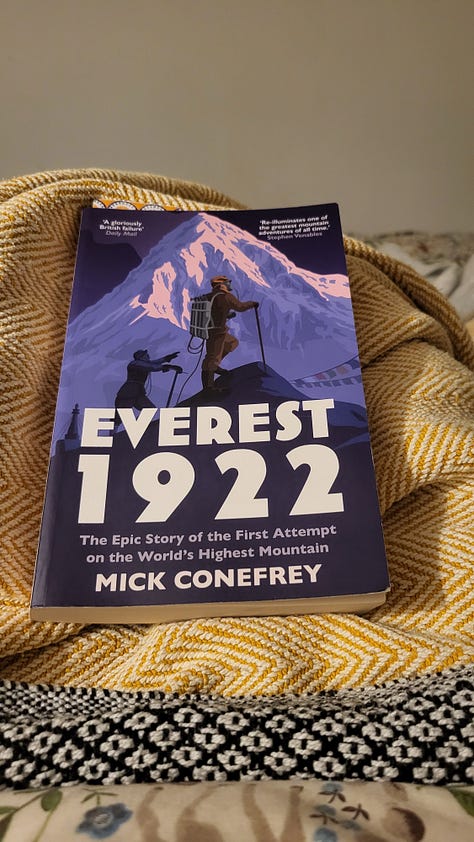
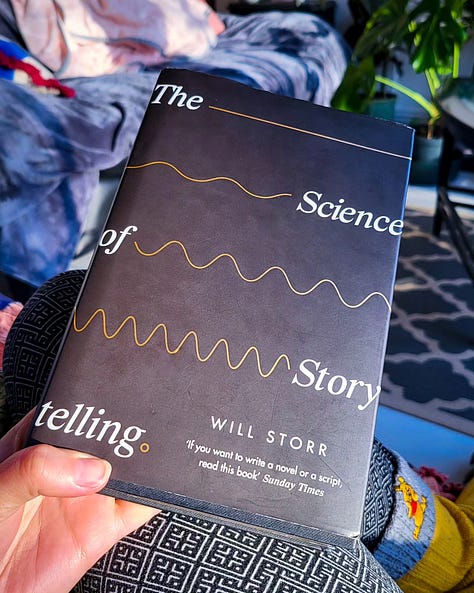
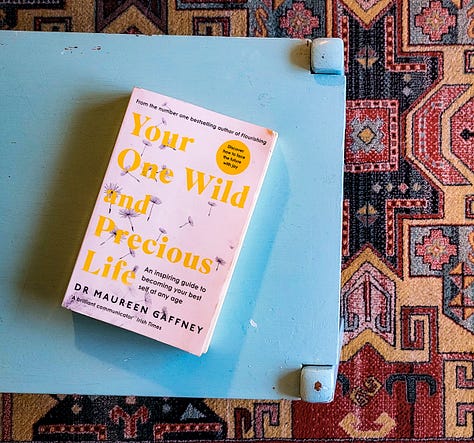
There was also a most out-of-character read for me, a book club choice which confirms the importance of book clubs for reading what you’d be least likely to pick up by choice – Everest 1922. This was a book that exercised the working class chip on my shoulder and inflamed my hypersensitive revulsion to ‘the Empire’. Mick Conefrey’s telling of the epic first advance on Everest was actually quite good, and I very much enjoyed his final, reflective chapter that dissected the impact of the mission, but I spent the greater part of the book scathing quietly about the sheer upper-class, domineering, white, male entitlement of it all.
Most recently in non-fiction there was Your One Wild and Precious Life: An Inspiring Guide to Becoming Your Best Self At Any Age by the wonderful Maureen Gaffney which I’m sorry to say has left me rather unmoored. I read the early chapters on childhood development and the origins of attachment styles with great interest, though the concepts are all familiar now, it is still something that proves useful to turn over in my mind every now and then, both for reflective and character development purposes.
It was the sad realisation that my own stage of life fell somewhere in the middle of the book, despite the sweetner of it being called ‘Young Adulthood’, and after that the inevitable sequence of events which followed could not be seen as anything more than a sad, sorry, roll downhill, though Gaffney promises otherwise. Having lived my first thirty-five years with a crippling inability to lift my head up and look ahead, I’m inclined to bury my head in the sand again for the next thirty-five. It will, of course, not be entirely doom and gloom – as long as I can get my pension in order – as there will be much more time to read and cast judgement when the distractions of work and social life pass me by.
Honourable mentions for the books abandoned so far this year, though not indicative of the quality so much as being the wrong book at the wrong time, or a library book overdue, you understand:
My Last Supper: One Meal, a Lifetime in the Making by Jay Rayner
This Charming Man by Marian Keyes
Snow by Orhan Pamuk
A Tale of Two Cities by Charles Dickens
An Irish Folklore Treasury: A Selection of Old Stories, Ways and Wisdom from the School's Collection by John Creedon
As for those currently underway which I am unlikely to abandon (but never say never), there will at some undetermined time in the future be a round up which includes The Bee Sting by Paul Murray, Kala by Colin Walsh, Transcription by Kate Atkinson, and Out of the Wreckage by George Monbiot.
If you’d like to read about those when the time comes around again, hopefully sometime within the next calendar year, you can subscribe below and have it delivered straight to your inbox.

